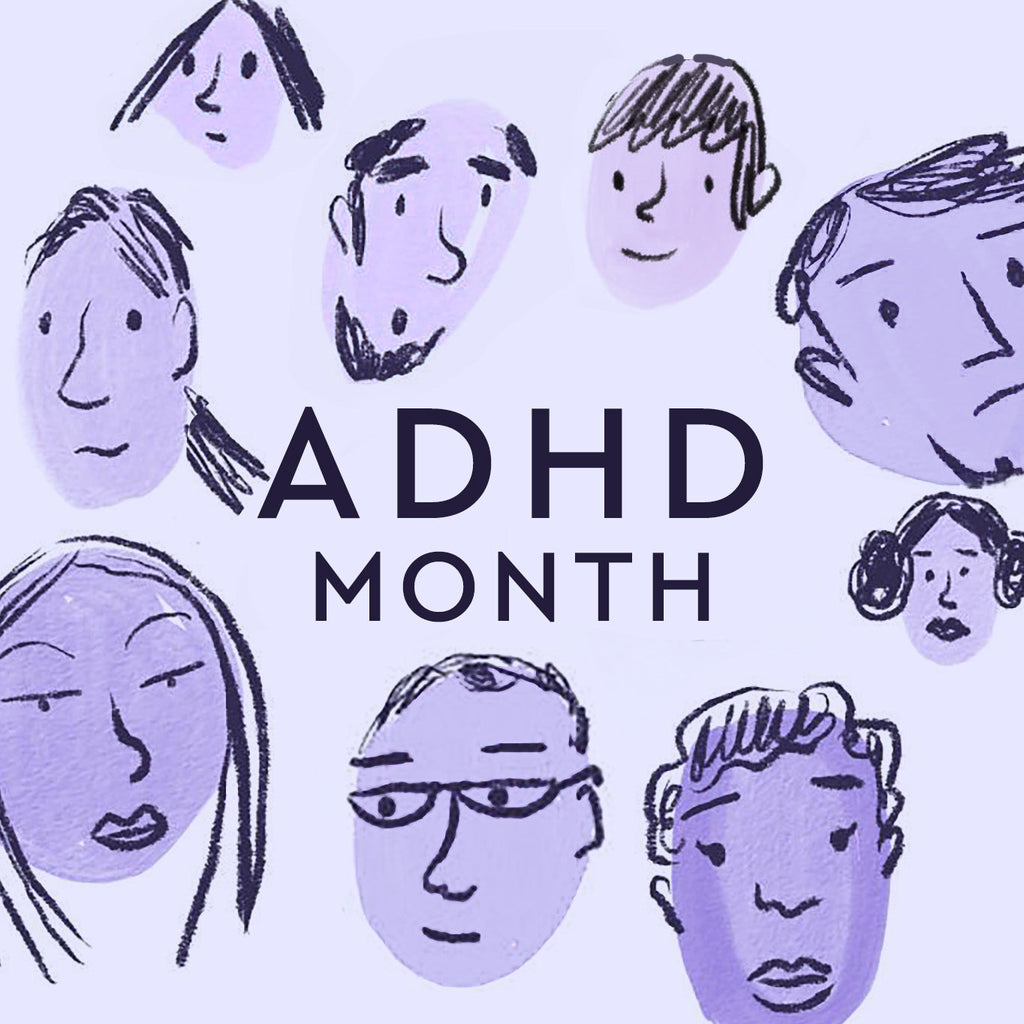October is ADHD month, and, chances are you will know someone diagnosed, self-identifies with symptoms or perhaps you are living with some type of neurodivergent difference yourself. Attention Deficit Hyperactivity Disorder Awareness (ADHD) is a neurodevelopmental condition which impacts approximately 2.6 million people and around 708, 000 children here in the UK. Symptoms range from mild, moderate to severe and can include disorganisation, inattentiveness, impulsivity, restlessness (/hyperactive behaviour), impacting everyday functioning, social communication, relationships, educational and occupational attainment.
Until recently, ADHD was not widely spoken about, and a diagnosis was more likely to be given to boys who were disruptive at school. Thankfully, there is now a 3:1 diagnostic ratio, meaning more females are being correctly identified and diagnosed. However, we are still not where we need to be in relation to wider recognition of the serious risks attached to undiagnosed ADHD. These can include eating disorders, self-harm, depression, anxiety, addiction and more.
NeuroBloom is a 1-day conference held on Friday 31 October at The Exchange in Twickenham and is dedicated to raising awareness of ADHD (and other neurodivergent conditions), providing support, empowerment and inspiration, in honour of ADHD Awareness month. This year’s theme ‘The Many Faces of ADHD’, reminds us that ADHD is never a one-size-fits-all experience – symptoms can vary in every individual, but with understanding and support, neurodivergent indiviudals can feel heard and supported, forming part of an inclusive society.
Nutrition and ADHD
ADHD management is multi-layered — involving medical, educational, social and lifestyle support. One often overlooked, but increasingly recognised piece of the puzzle, is nutrition.
Research in the field of Nutritional Psychiatry, Psychology and Neuroscience continues to explore the impact of diet on brain health and behaviour. It has long been recognised that certain nutrients, play a key role in brain activity and function. UK’s leading ADHD specialist, child neuropsychologist and nutritional neuroscientist, Dr Rachel Gow describes these collectively as “brain-selective” nutrients which include omega-3 fatty acids, B-vitamins, Vitamin D, minerals such as zinc and magnesium and polyphenols from colourful plant foods. These are thought to play supportive roles in mood, cognition, and attention. Meanwhile, diets high in refined sugars and ultra-processed foods have been linked with poorer outcomes, such as depression and obesity and are linked to an increased risk of metabolic health disease.
Healthy eating provides the nutrients which support brain health, activity, and function. Dr Gow encourages us to “fuel our brains with the nutrients they need to function”. Certain types of nutrients provide the scaffolding, resilience and nutritional armour children need to focus, thrive and flourish.
At Haskapa, we’re especially interested in the role of anthocyanins — the plant compounds that give purple and blue berries their deep colour. Haskap berries contain around four times more anthocyanins than blueberries, and these antioxidants are being studied for their potential role in supporting memory, focus and overall brain health.
Book Spotlight: Smart Foods for ADHD and Brain Health by Dr Rachel Gow
Dr Rachel Gow is a child neuropsychologist, registered nutritionist, founder of Nutritious Minds Trust Charity and author of Smart Foods for ADHD and Brain Health: How Nutrition Influences Cognitive Function, Behaviour and Mood (Jessica Kingsley Publishers, 2021).
In this book, Dr Gow weaves together scientific research, personal narrative, and practical guidance to explore how nutrition can support brain health, and in particular, help manage ADHD symptoms. Using scientific evidence and research to lived-experience stories from neurodivergent advocates such as Carrie Grant and her daughter, Olive, she provides practical strategies and recipes helping to bridge the gap between neuroscience and everyday life for families.
Inspired by the nutrition approach of Dr Gow and the work of Nutritious Minds Trust Charity, here’s a fun, kid-friendly recipe that incorporates Haskapa with other tasty, brain-supportive ingredients. You can use it as a breakfast smoothie bowl or snack bowl. Designed for kids – suitable for adults!
Haskapa Brain-Boost Smoothie & Snack Bowl
Ingredients (serves about 2 children)
- 1 avocado
- ½ cup plain Greek yogurt (or a plant-based yogurt if dairy-free)
- 1 tablespoon flaxseed (ground) or chia seeds
- 1 tablespoon nut butter (e.g. almond or peanut butter)
- 1 teaspoon Haskapa Superfood Berry Powder (or 1–2 teaspoons depending on strength)
- ¼ to ½ cup milk (or plant milk) (add until you reach a smooth, scoopable consistency)
Instructions
- In a blender, combine avocado, yoghurt, flaxseed or chia, nut butter, Haskapa powder, and the milk – but start with less to ensure a thick consistency.
- Blend until smooth and thick. Add more milk if needed but keep it scoopable (a thick smoothie consistency).
- Pour into bowls or jars.
- Let the kids decorate with toppings — berries, nuts, seeds, cacao nibs etc.
- Serve immediately.
Toppings: fresh berries (or more Haskapa), chopped almonds or other nuts (e.g. walnuts, pecans), seeds, shredded coconut, or oats.
Want to hear more? Haskapa are sponsoring this exciting event:
NeuroBloom: Nurturing ADHD & Neurodivergent Minds, From Research to Real World.
The Exchange, Twickenham
Fri, 31 Oct 2025 08:00 - 19:00
NeuroBloom is an immersive and inclusive summit that shines a spotlight on ADHD and neurodivergent minds, exploring the connections between neuroscience, nutrition, education, brain health, wellness, and prevention.

